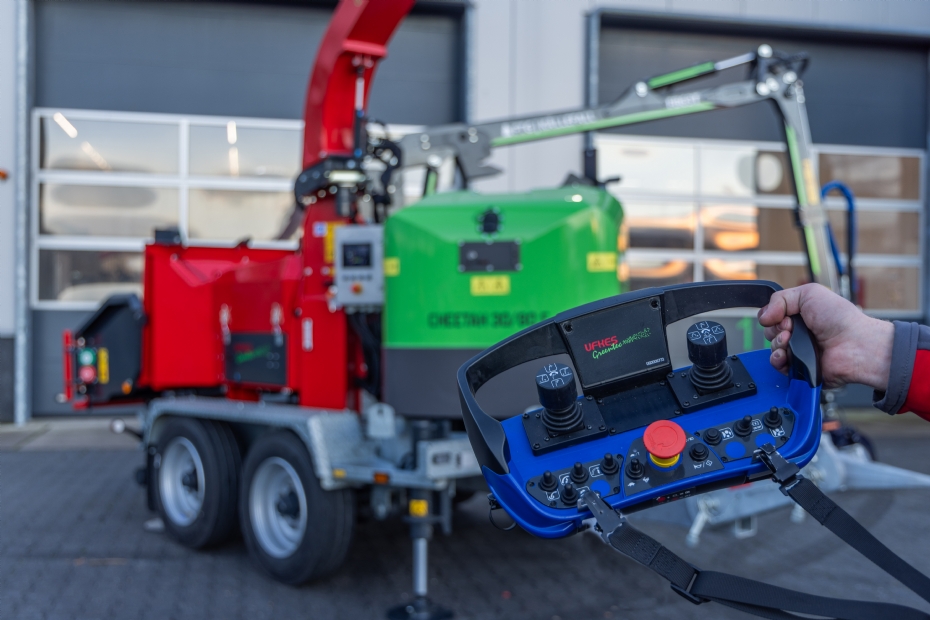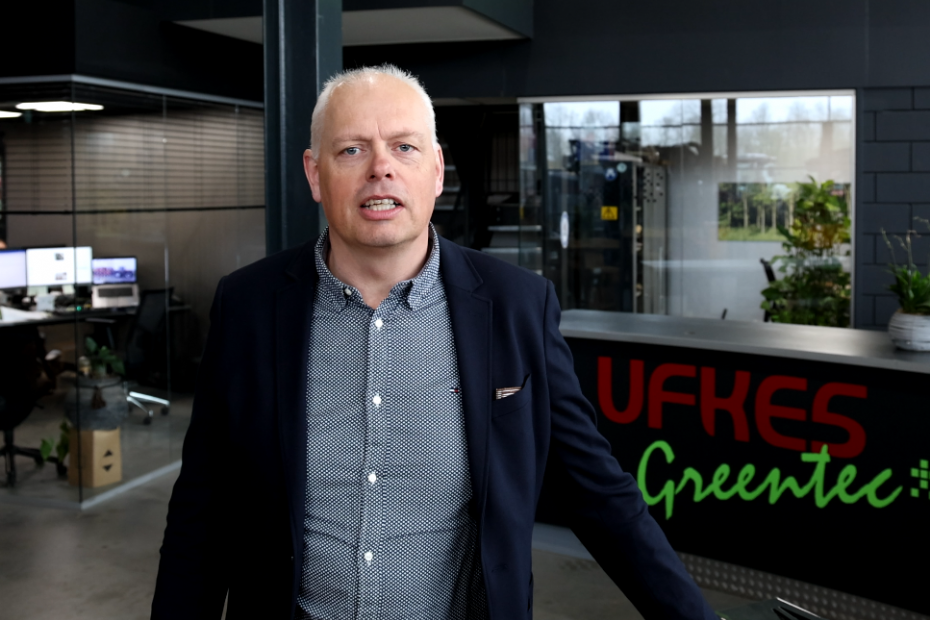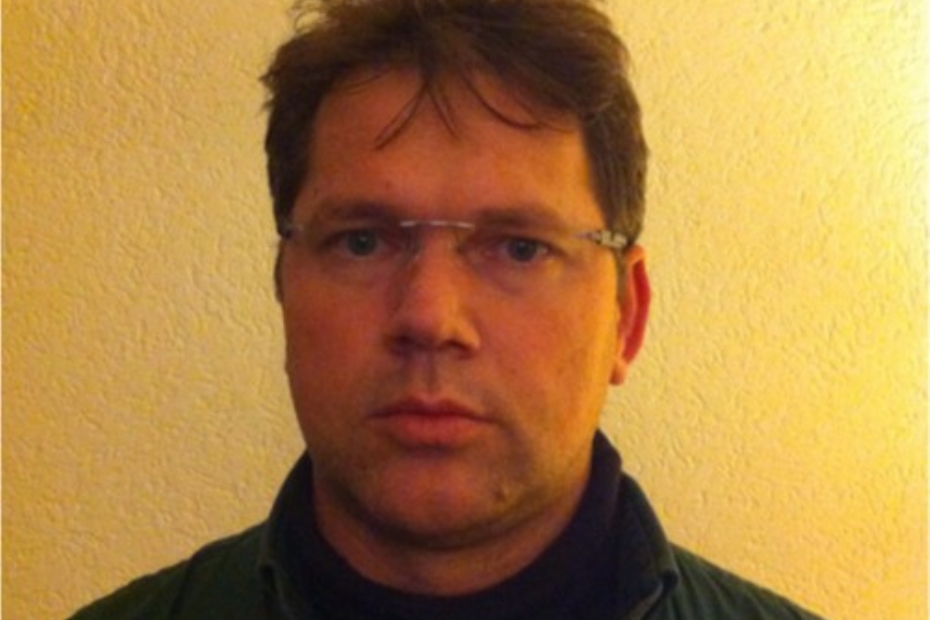New Greentec Cheetah 30/80 full electric is a viable alternative |
|
|
|
|
 |
| 251 sec |
GKB Group deploys electric wood chipper for further sustainability of their fleet
Specifications more frequently mandate zero emissions for operations. Machine manufacturer Ufkes Greentec addresses this in their products by replacing diesel with batteries. The latest achievement is the Greentec Cheetah 30/80 full electric, which serves as an alternative to the existing diesel version. GKB Group has already had positive experiences with the electric wood chipper. Jippe Ufkes and Martijn Kraaijeveld (GKB Group) explain why.
| Greentec Cheetah 30-80 Electric in use by GKB Group |
The Greentec Cheetah 30/80 full electric was first introduced in 2022 during Green Technology Holland (GTH) in Biddinghuizen. 'That was the first prototype,' says Jippe Ufkes, owner of Ufkes Greentec. 'We wanted to test how this electric chipper would be received by the visitors. There was definitely interest, which led to a second prototype last year. And now, GKB Group is using the first machine that we have produced in series.'
Technically profitable
The difference with the older diesel version of the Cheetah 30/80 is not only the electric drive. 'We've adjusted technical aspects of the new battery-powered wood chipper so that the machine requires even less power, although the existing diesel version already used little. By doing so, you can dose the power, which also makes the battery last longer.'
The aim for Ufkes is to build a machine that is also technically profitable. 'For example, in the automotive industry, you see many electric cars that not only have a large range but also a full technical execution. In machine construction, it's still common for the capacity of battery machines to drastically decrease. Then, in essence, you have a hobby machine rather than a professional version. We strive to create professional machines that can handle the real work.'
Ufkes notes that the battery life of the wood chipper depends on the type of material you input. 'If you put in extremely heavy wood, it will consume the battery capacity. But for continuous operations, the chipper can last five to six hours with, for example, a double battery pack. That's more than enough, as I don't know anyone who chips all day long. Essentially, the electric machine should be able to do what users were accustomed to with the diesel variant. That's what it's all about for us.'
 | | Remote control for the feed crane is available as an option |
|
|
Knowledge now in-house
Ufkes has already sold three of the four machines from the first production series of electric Cheetahs. Additionally, several machines are on order that the company will now build. 'We manufacture our machines carefully. Therefore, we take into production the number of units we expect to sell. Of course, we want to sell, but we also aim to deliver a quality product.'
When Ufkes began developing the Cheetah 30/80 electric, the company was still partly dependent on third-party knowledge in the field of electrification.
'However, a year and a half ago, we turned things around and brought the electro specialists in-house. Of course, we still purchase batteries and chargers externally, but the knowledge of electric drive and the programs we create, we keep internally. Also, our assembly and service staff have undergone training so that we can truly tinker, assemble, and provide service. We come from a world of diesel engines, so we must master the electric technology and work safely.'
Ufkes expects a growing market for electric machines in the future. 'We plan to extend the electro program to other wood chippers and stump grinders.'
|
|
Jippe Ufkes: 'We plan to extend the electro program to other wood chippers and stump grinders'
| |
|
Unique feature
He is keen to highlight a unique feature of the Cheetah: 'We have a disc chipper that has a cutting angle of 50 degrees, making the machine run lightly and produce coarse chips that are also desirable and sought after for biomass. Additionally, our disc is "hungry." That means it wants to pull the wood towards itself. Moreover, we have a large feed channel, because the machine doesn't cut next to the chipping disc, but under the main axle of the chipping disc. This gives it a much larger feed area. Moreover, there is hydraulic pressure on the rollers, ensuring there is always equal pressure on the cylinder. This means there is full pressing power on the rollers, both with thin and thick material. The wood is thus forcefully pulled in.'
Ufkes revisits the topic of coarse chips for biomass. 'The yield of the wood chips forms a nice income for the usage of the chipper. Part of the work is determined by the operating hours, but the byproduct of wood chips for biomass provides extra income. This way, you can earn back a decent part of it.'
 | | Jippe Ufkes |
|
|
Another strong point of the chipper is the easy replacement of parts. 'For the machine, there are replaceable wear parts available at all places where wear can occur. These are quite easy to install. The machine is really made for a long lifespan, where maintenance also plays an important role. Almost all grease nipples are easily accessible by removing a cover. So with revision and regular maintenance, it demonstrably lasts longer. Given the current labor shortage, we think along and make maintenance- and user-friendly machines,' says Ufkes.
GKB uses the first electric Cheetah
GKB Group, specialists in culture, green, and civil engineering, has been working with the Cheetah 30/80e for over a year. 'Since the end of last year, we have been operating with the definitive version; before that, we were actively involved in the development model,' says Martijn Kraaijeveld, responsible for equipment management at GKB Group. 'Why did we choose the electric Cheetah? We try to be innovative and meet all the specifications that are currently prescribed. We are always pioneering with new machines. We had already purchased an electric chipper, but it was actually too light for the work. We were also using a powerful Cheetah diesel wood chipper. Then we asked Ufkes if an electric variant could be developed. Because we use multiple machines from Ufkes, we are in regular contact with each other. We also often provide feedback during the development phase of new machines, including this one. And one thing led to another.'
GKB primarily uses the electric Cheetah for pruning and light clearing work. Kraaijeveld: 'You could opt for a more powerful machine, but then you have the issue of whether a light truck can still pull it because of the weight of the batteries. In this context, you need to make the electric version as efficient as possible. Then the trick is to make as many chips as possible with as little power as possible. It's not always about the chipping speed, but whether you can process the number of cubic meters in a day.'
Zero emission
The electric Cheetah is part of a comprehensive program of electric machines and vehicles at GKB,
including various excavators, service vans, and trucks. The company, based in Barendrecht, primarily works for governments that set specific CO2 emission standards for projects. 'In specifications, you increasingly see zero emissions required in urban areas. We respond to this by electrifying our fleet. We try to lead in thought and action. You are still searching, but a turning point is certainly coming.'
According to Kraaijeveld, you can do everything with the Cheetah if you need to work emission-free. 'You can chip two bins of wood just fine in a day. However, if you want to chip logs of 30 centimeters, I don't know how far you'd get. You have to handle this issue responsibly. Once you have a battery machine, you automatically start looking at how you can save on energy.'
 | | Martijn Kraaijeveld (GKB Groep) |
|
|
This article was previously published on March 3, 2025, on the Boomzorg website.
| LOG IN
with your email address to respond.
|
|
|
| There are no comments yet. |
|
| |
Anyone can place small ads for free through their own account.
Place a free ad
|
|
|
|